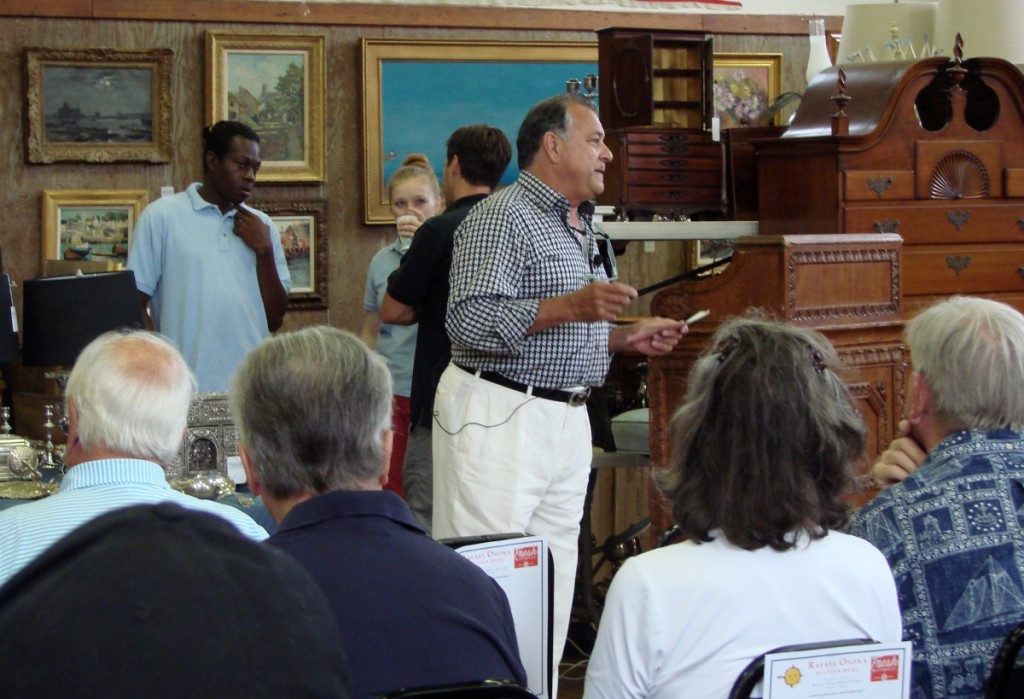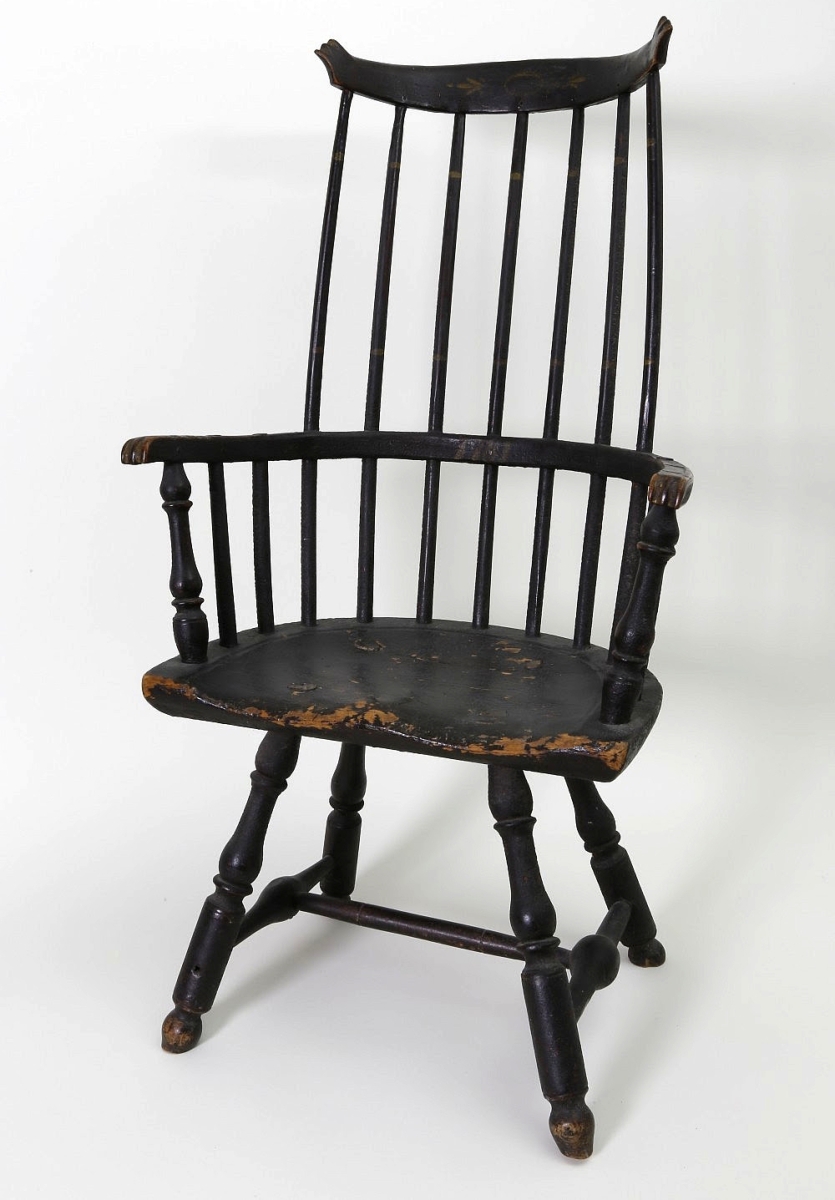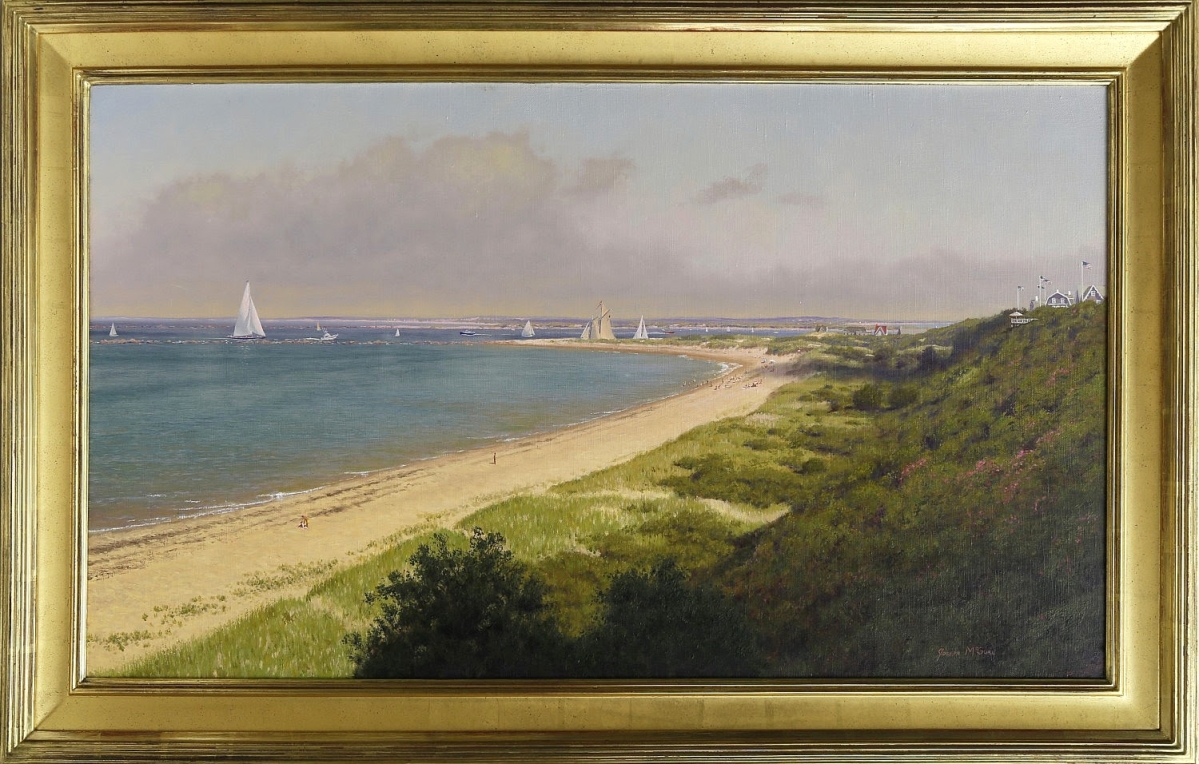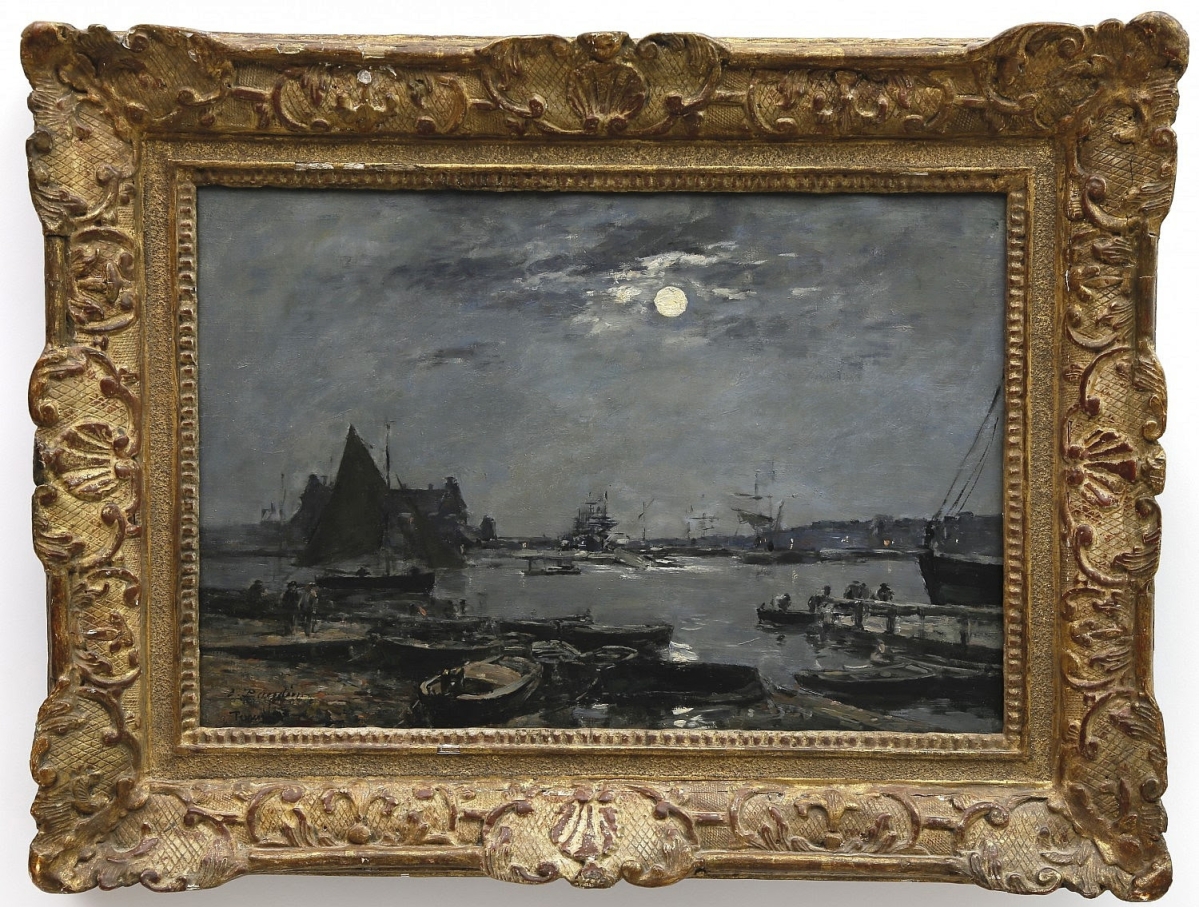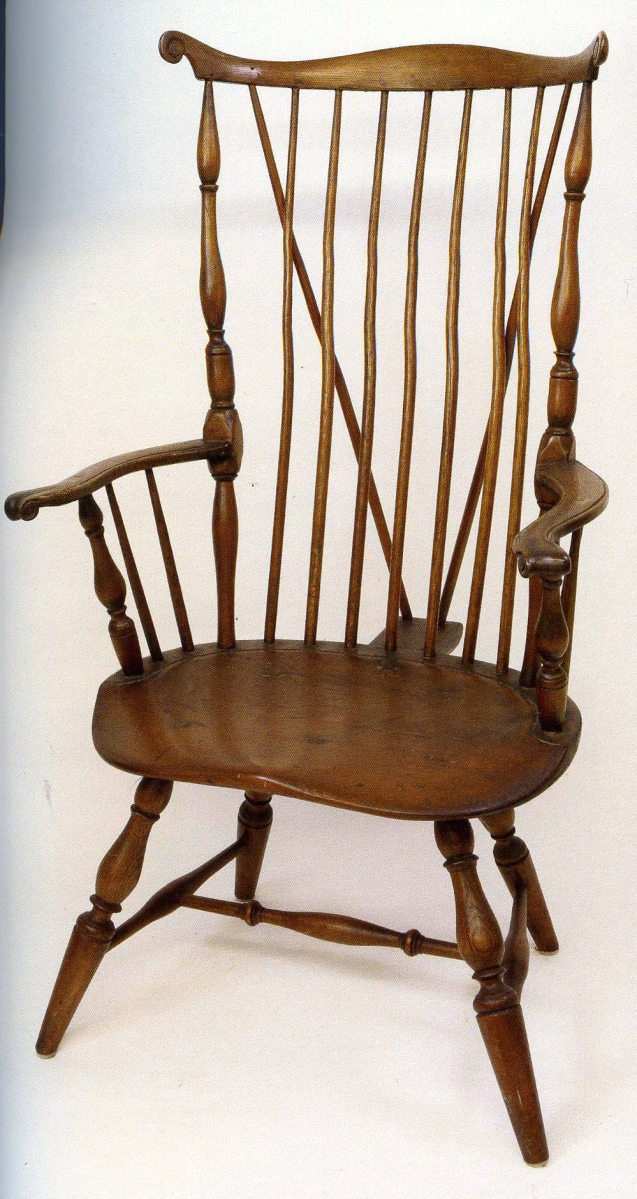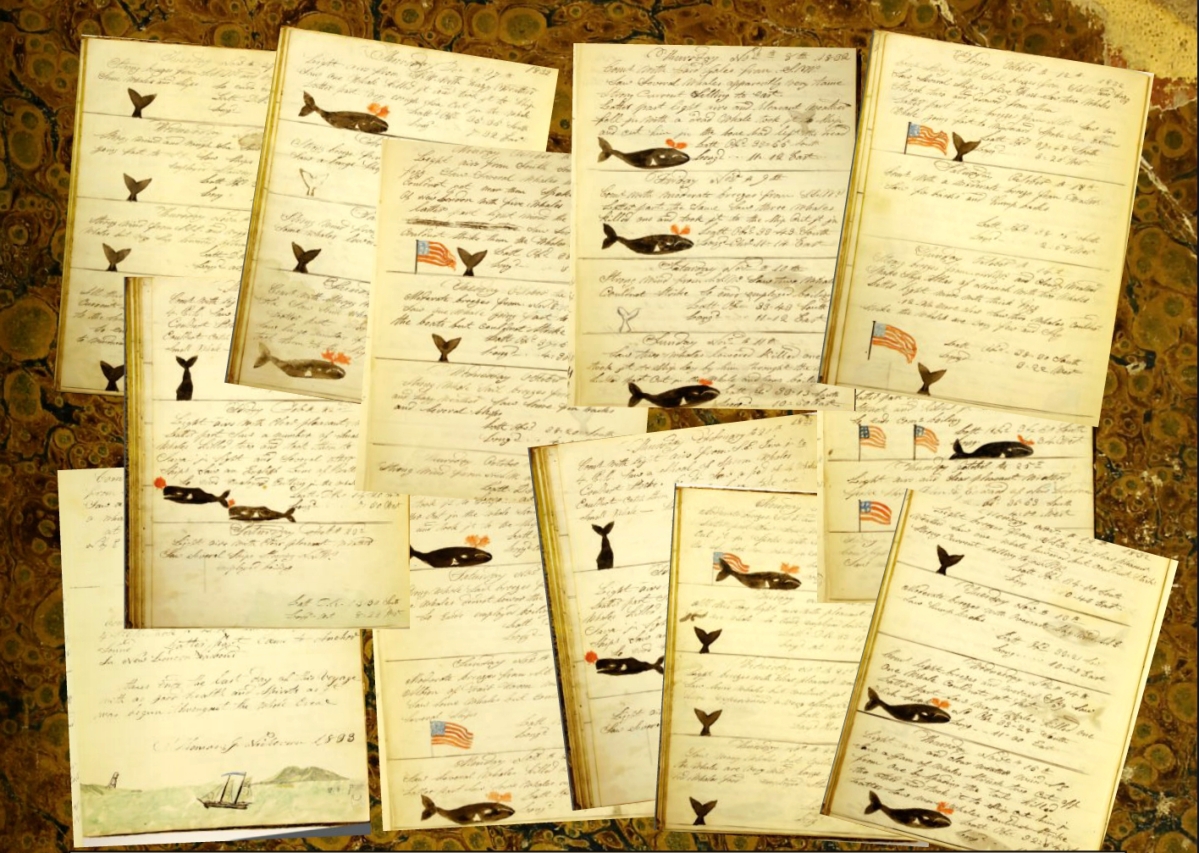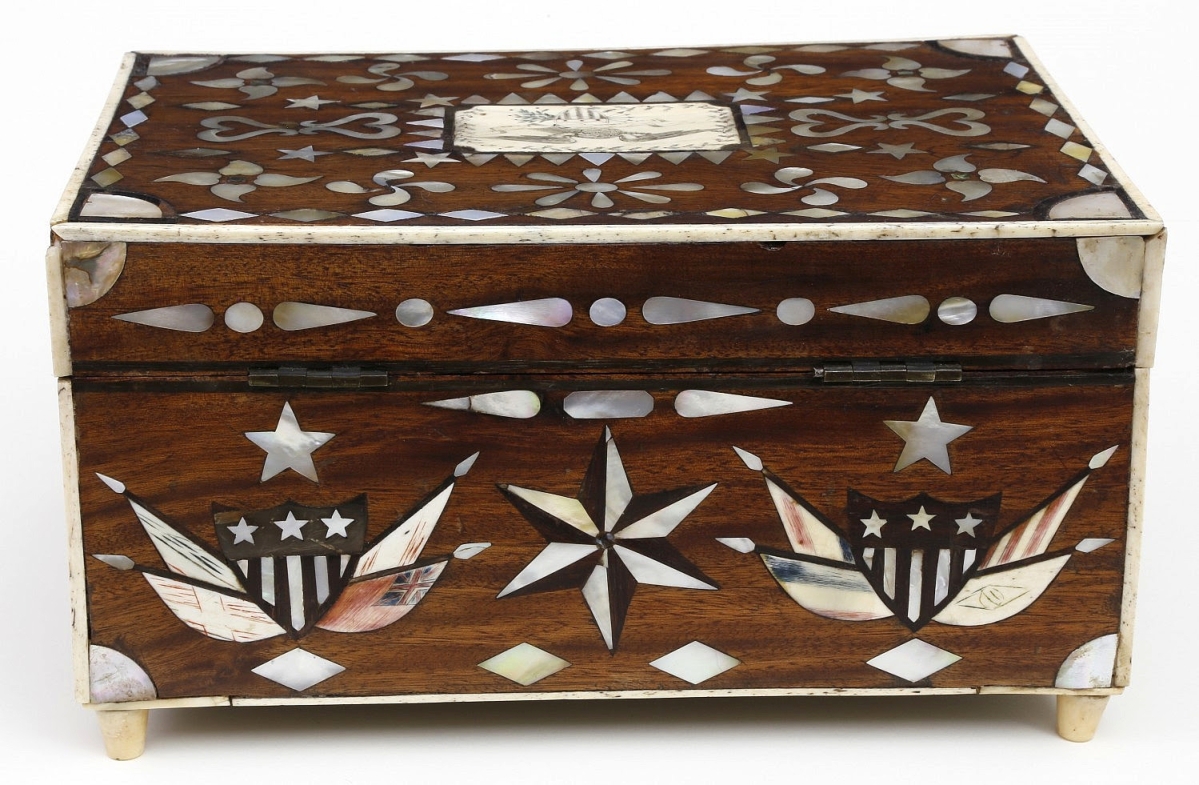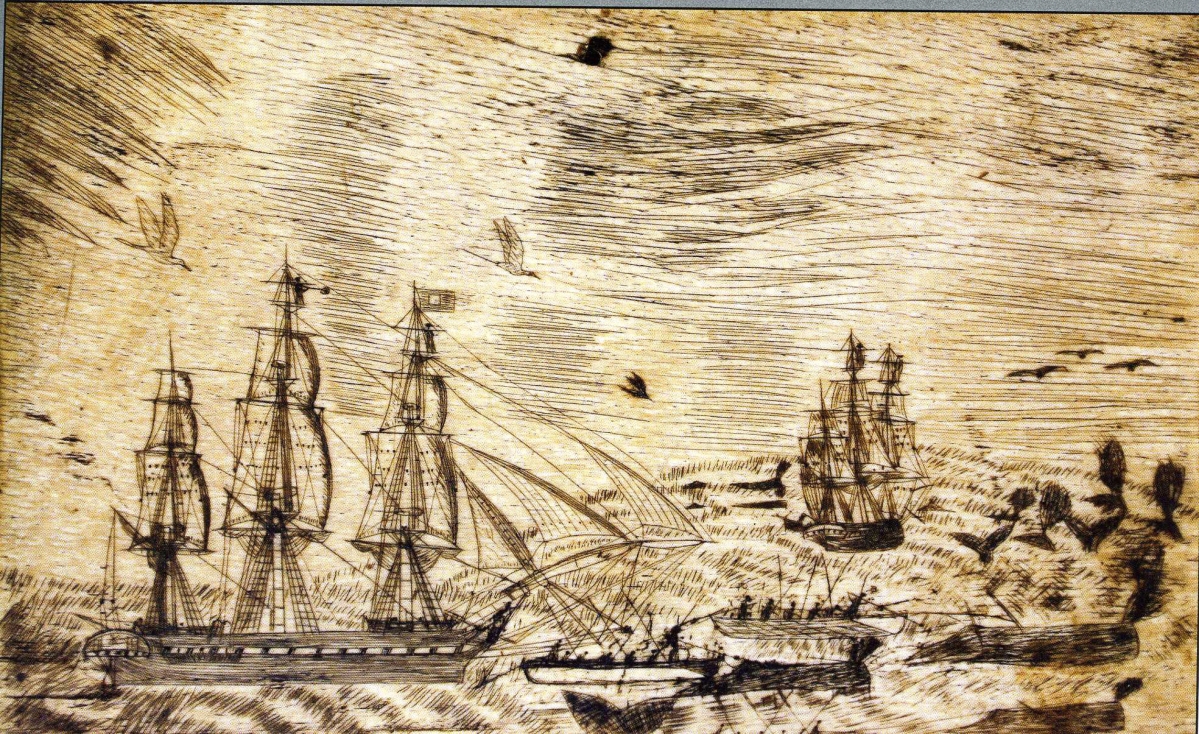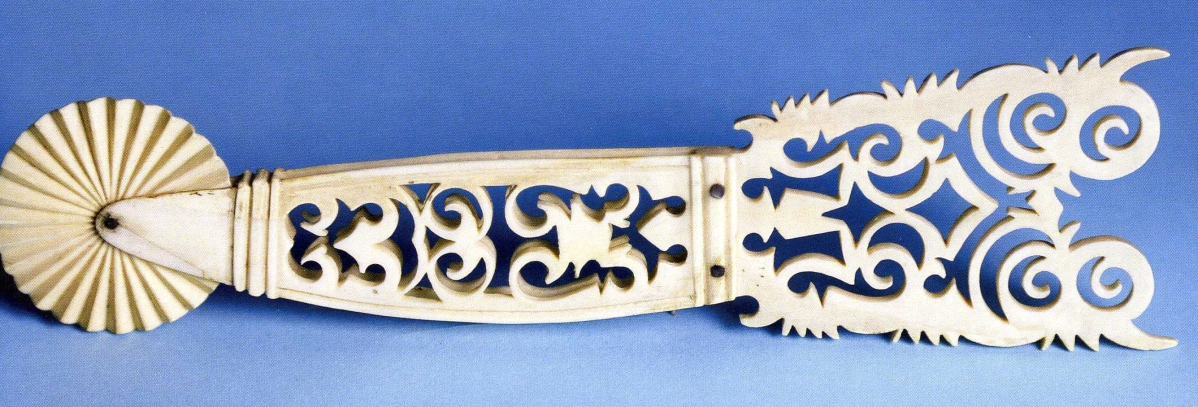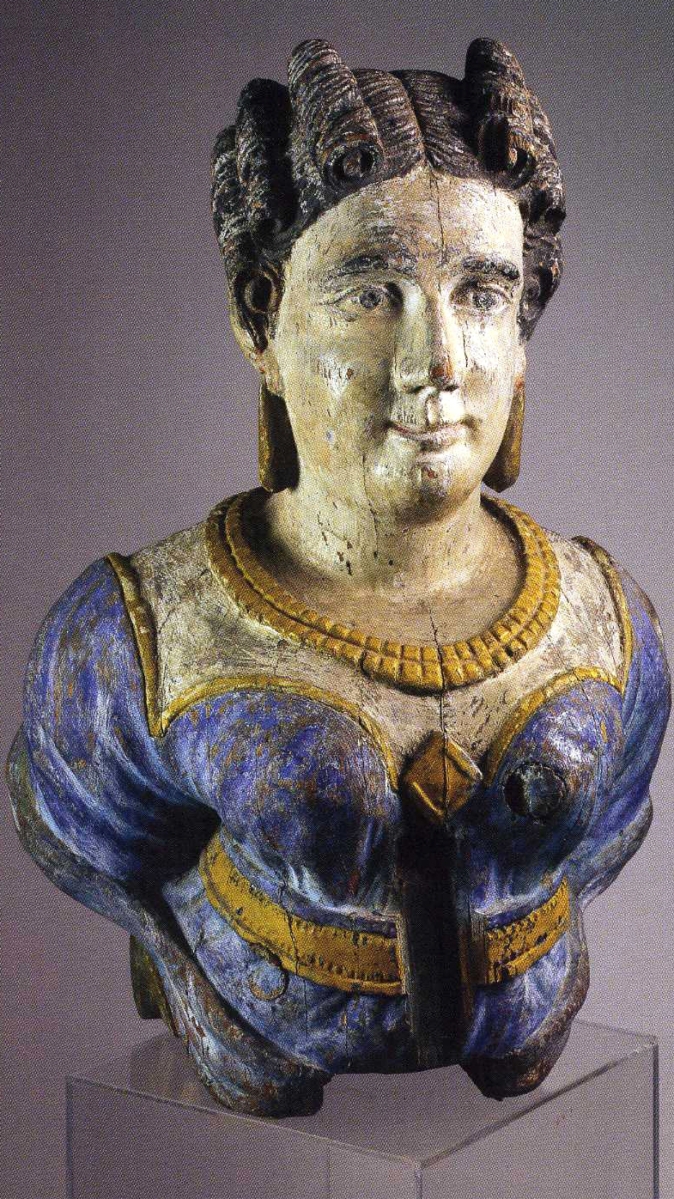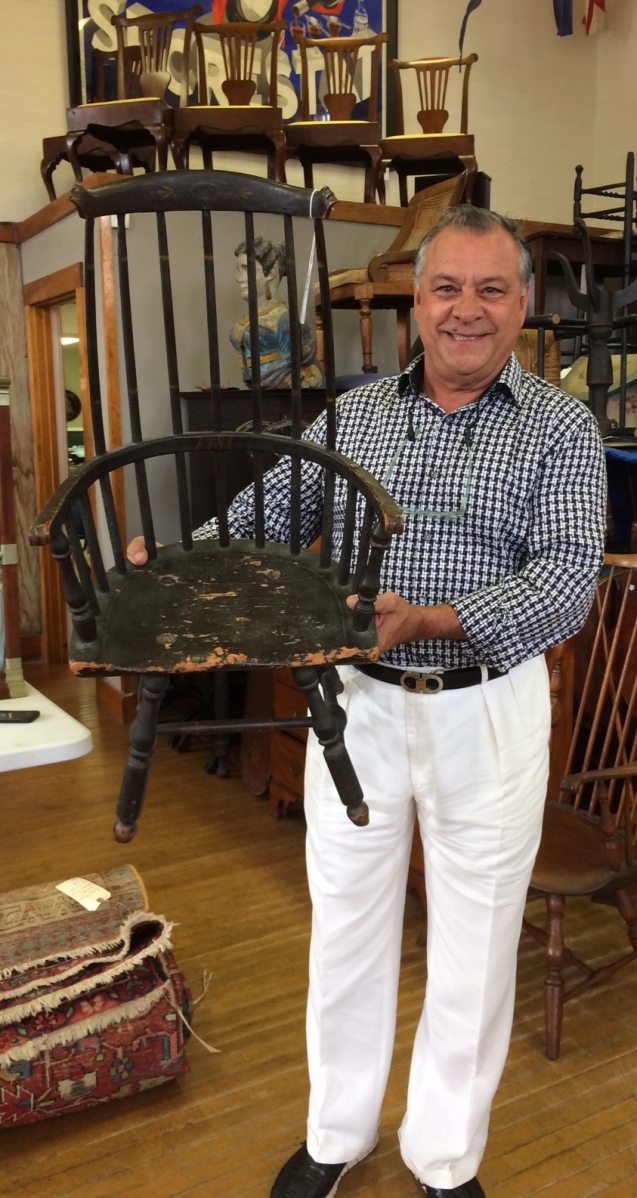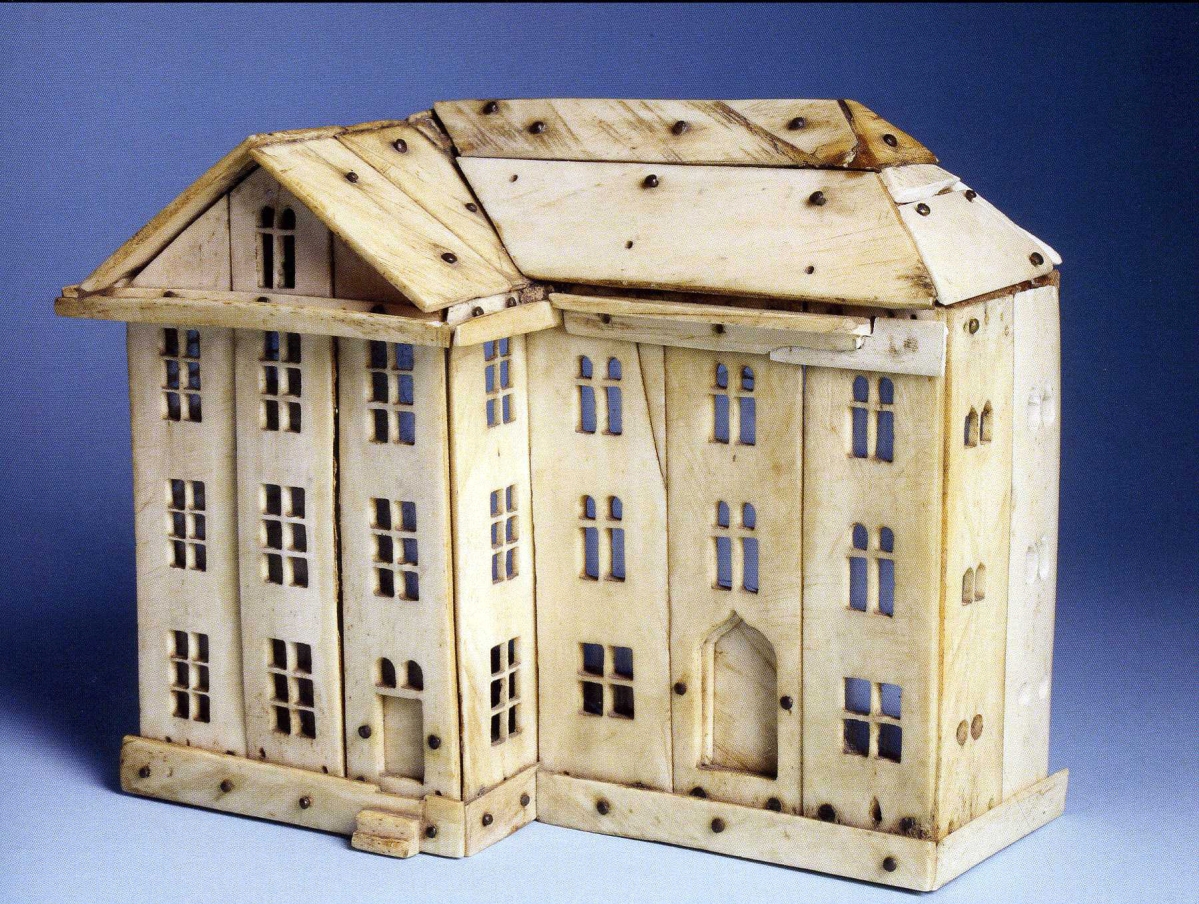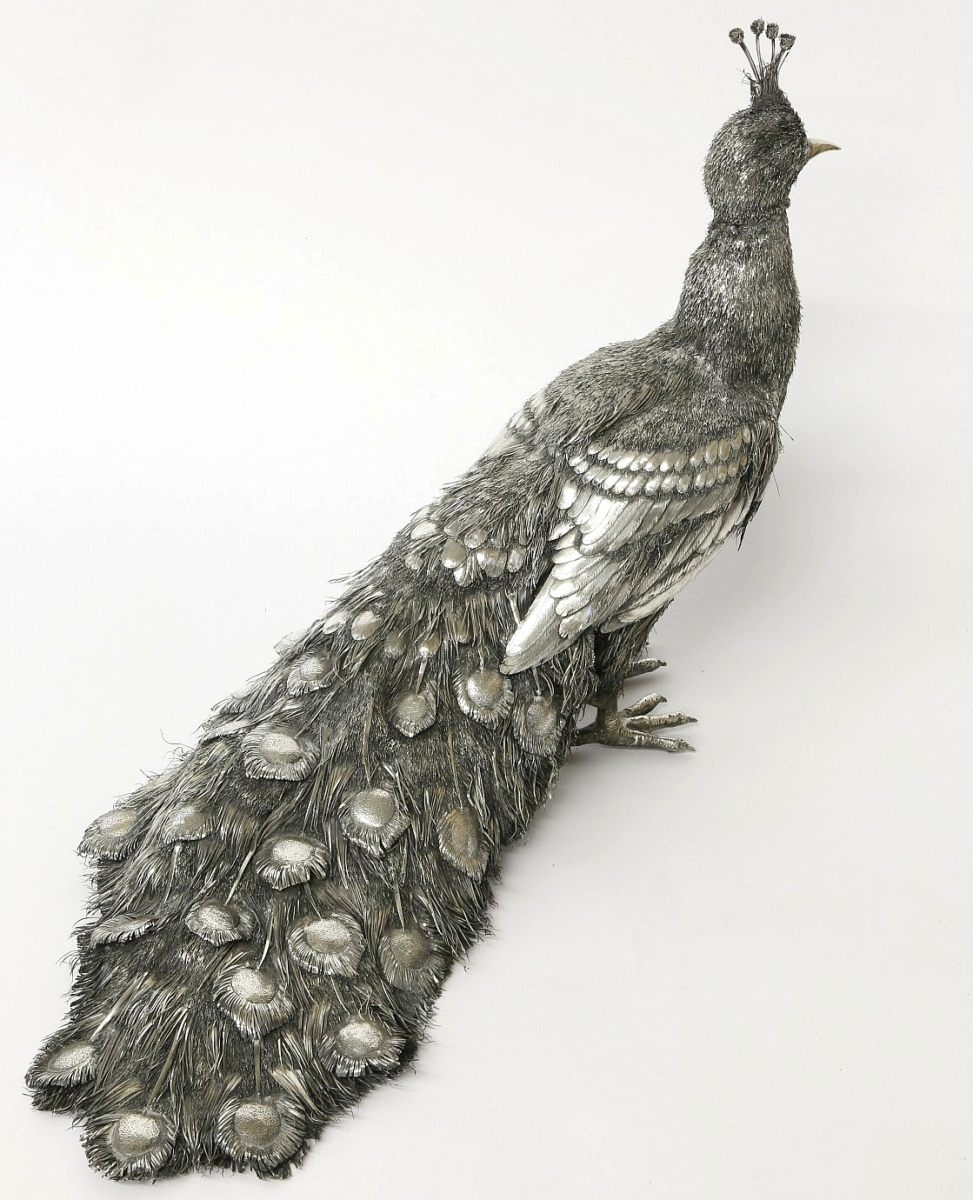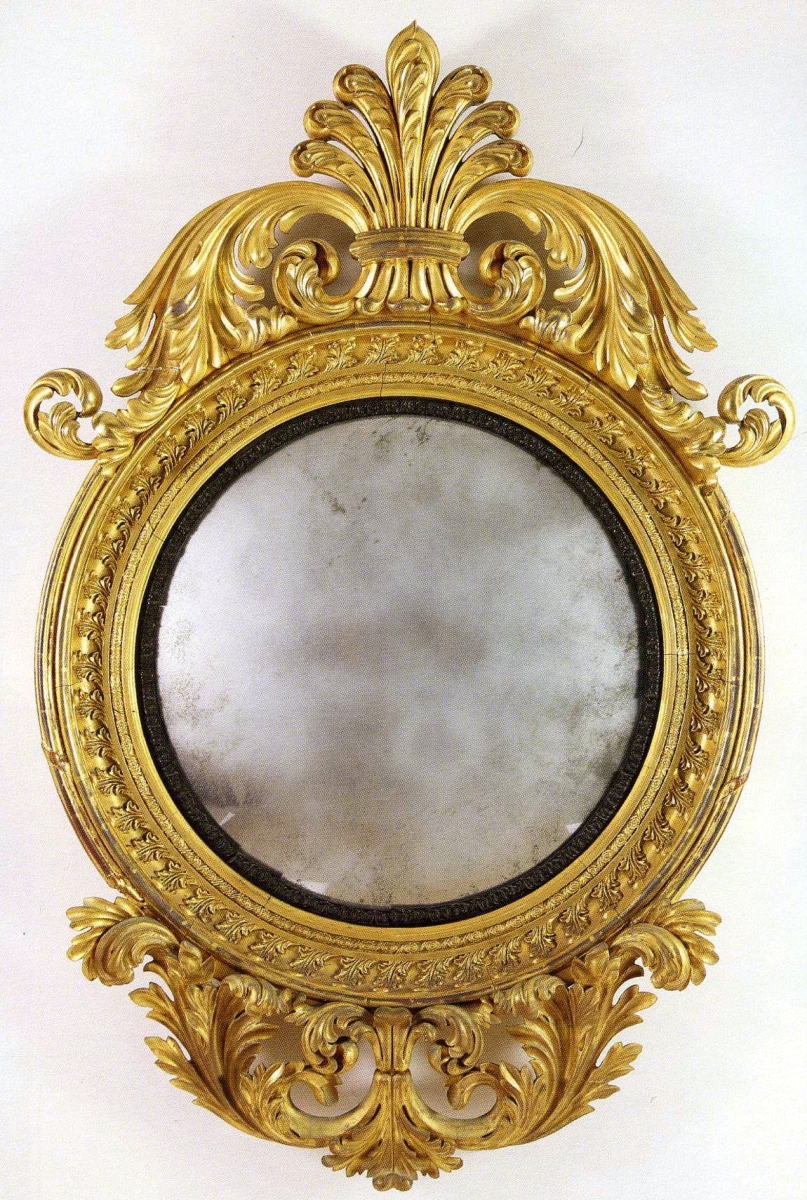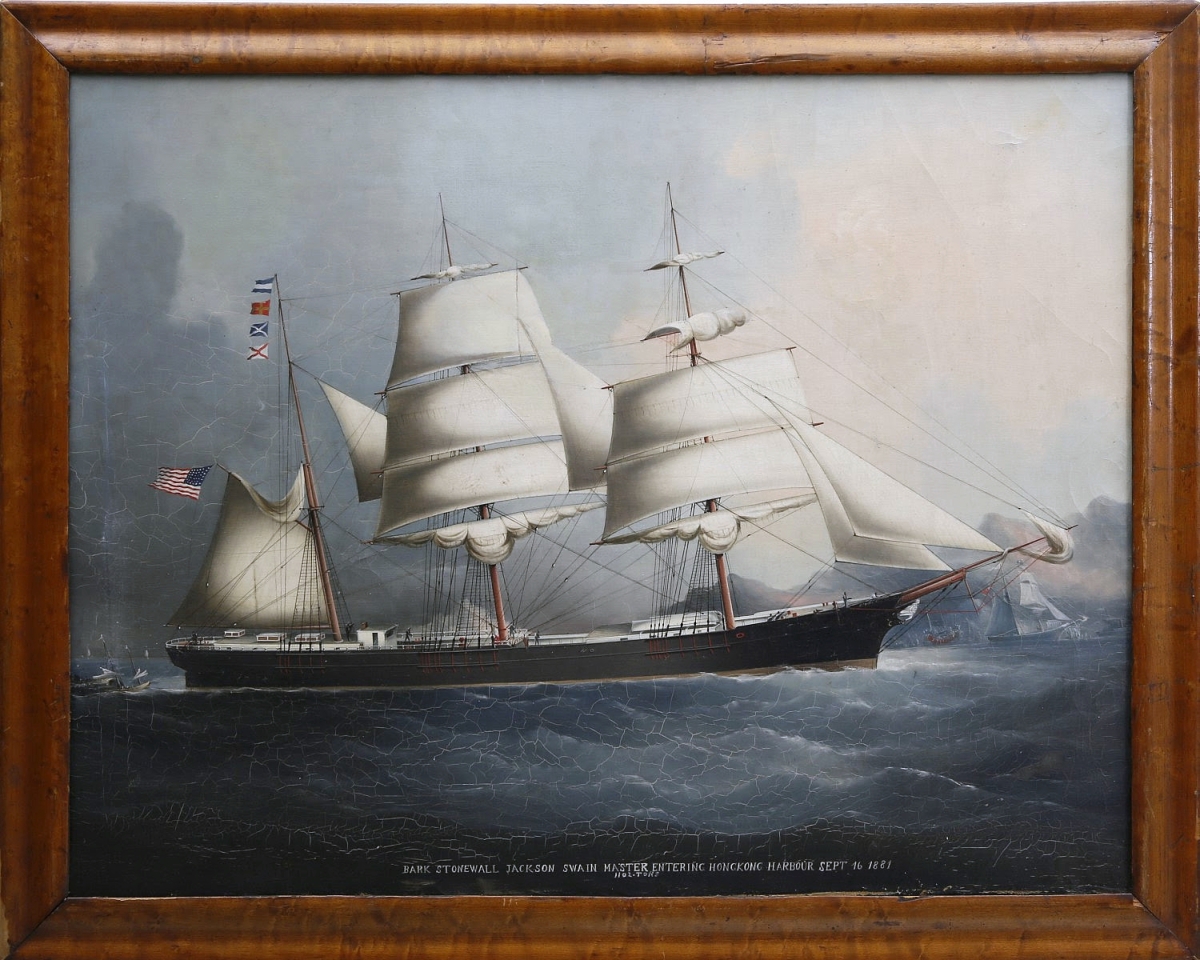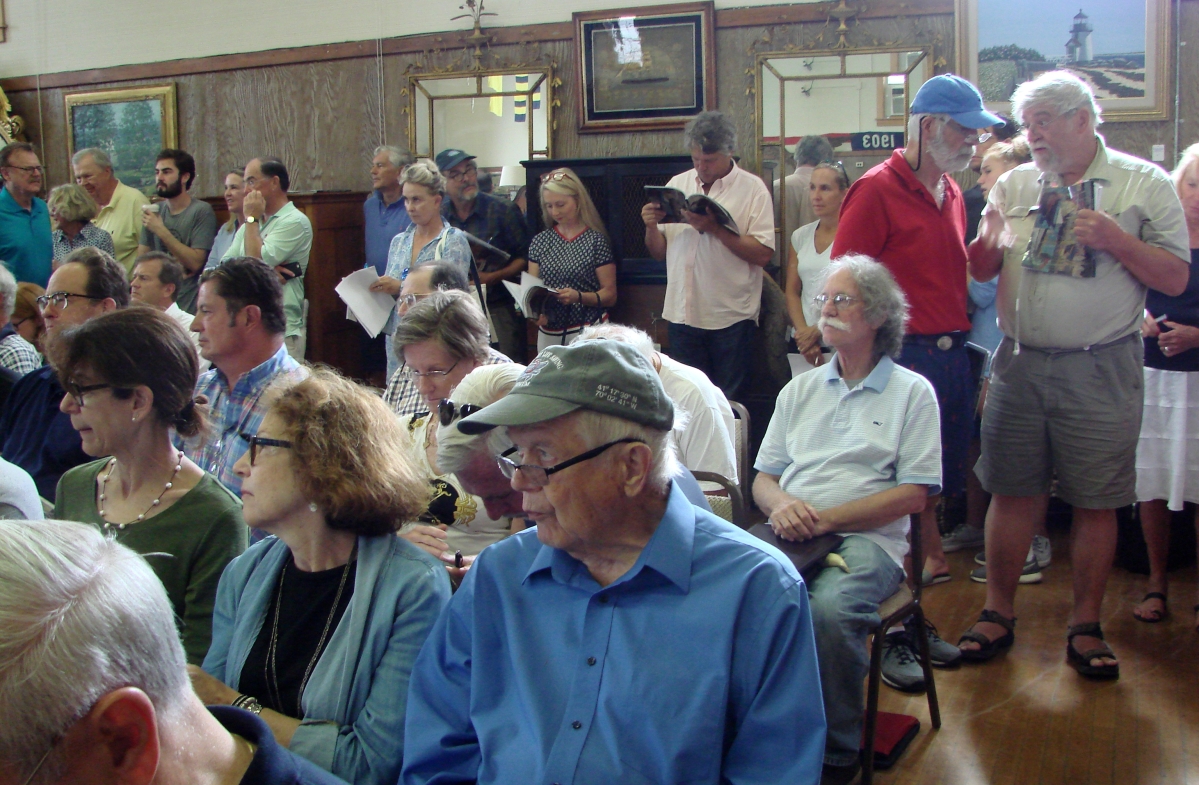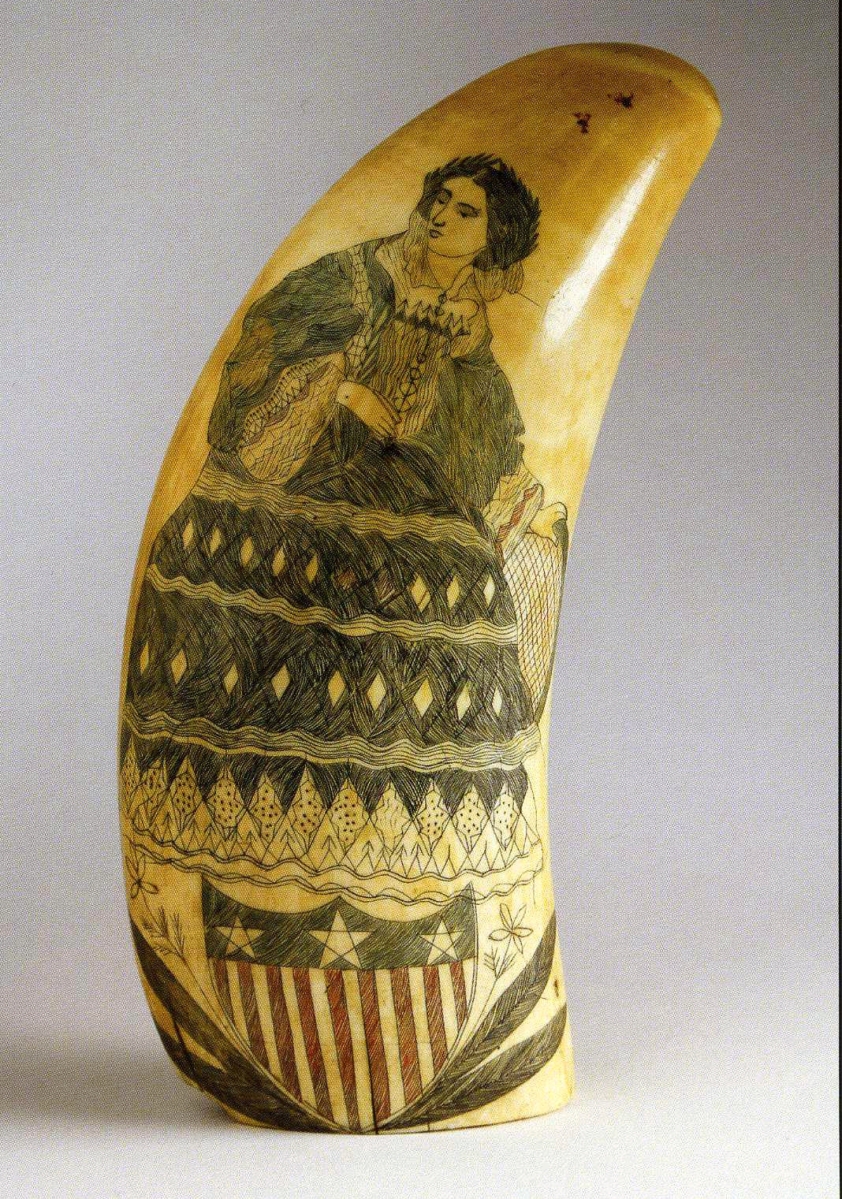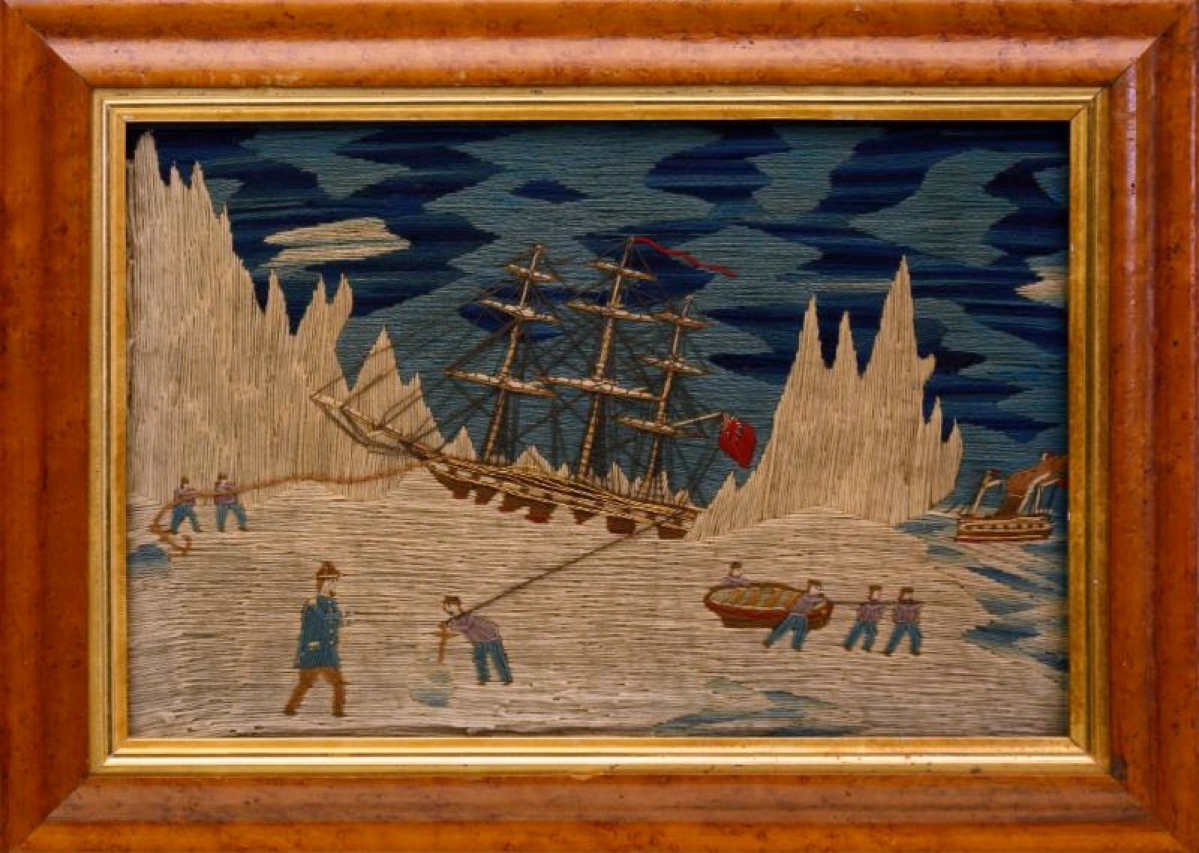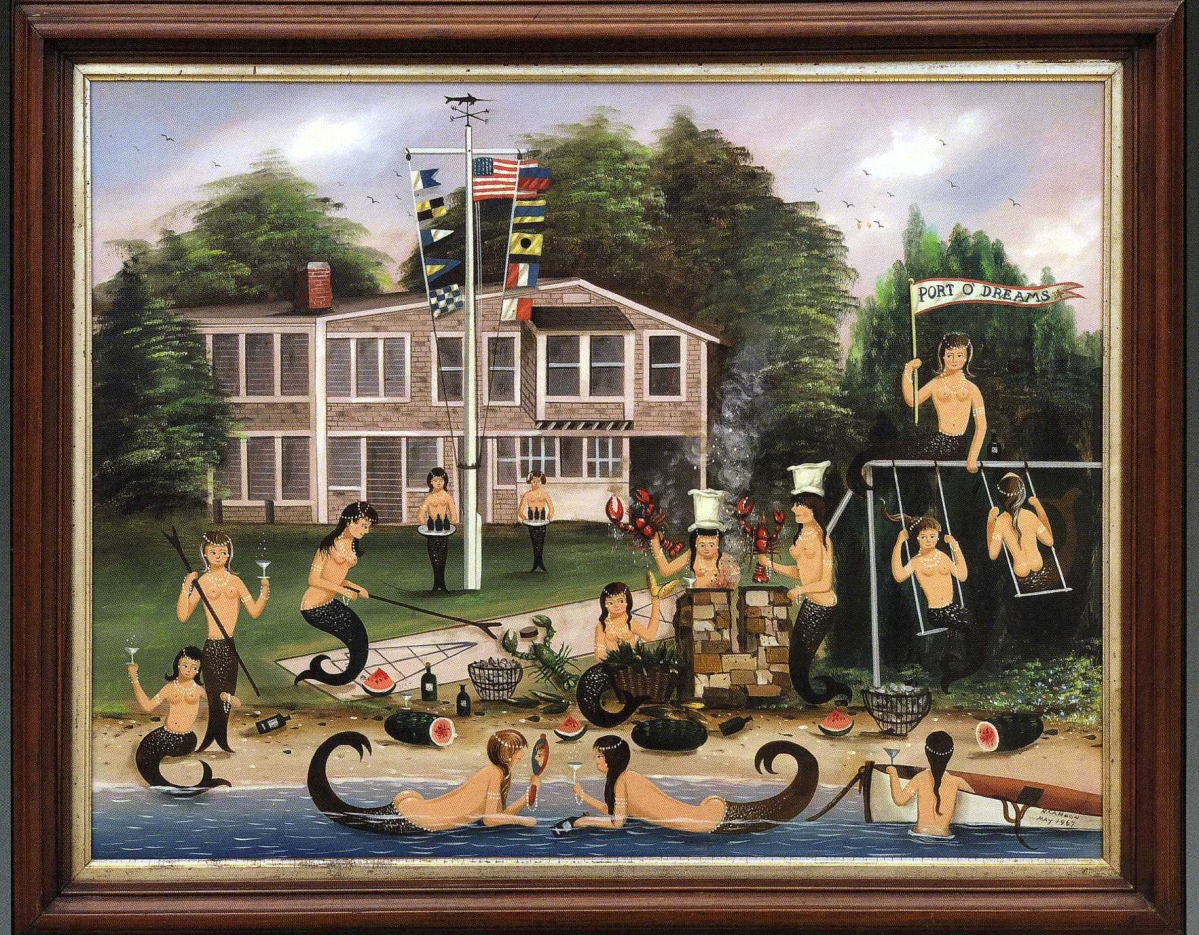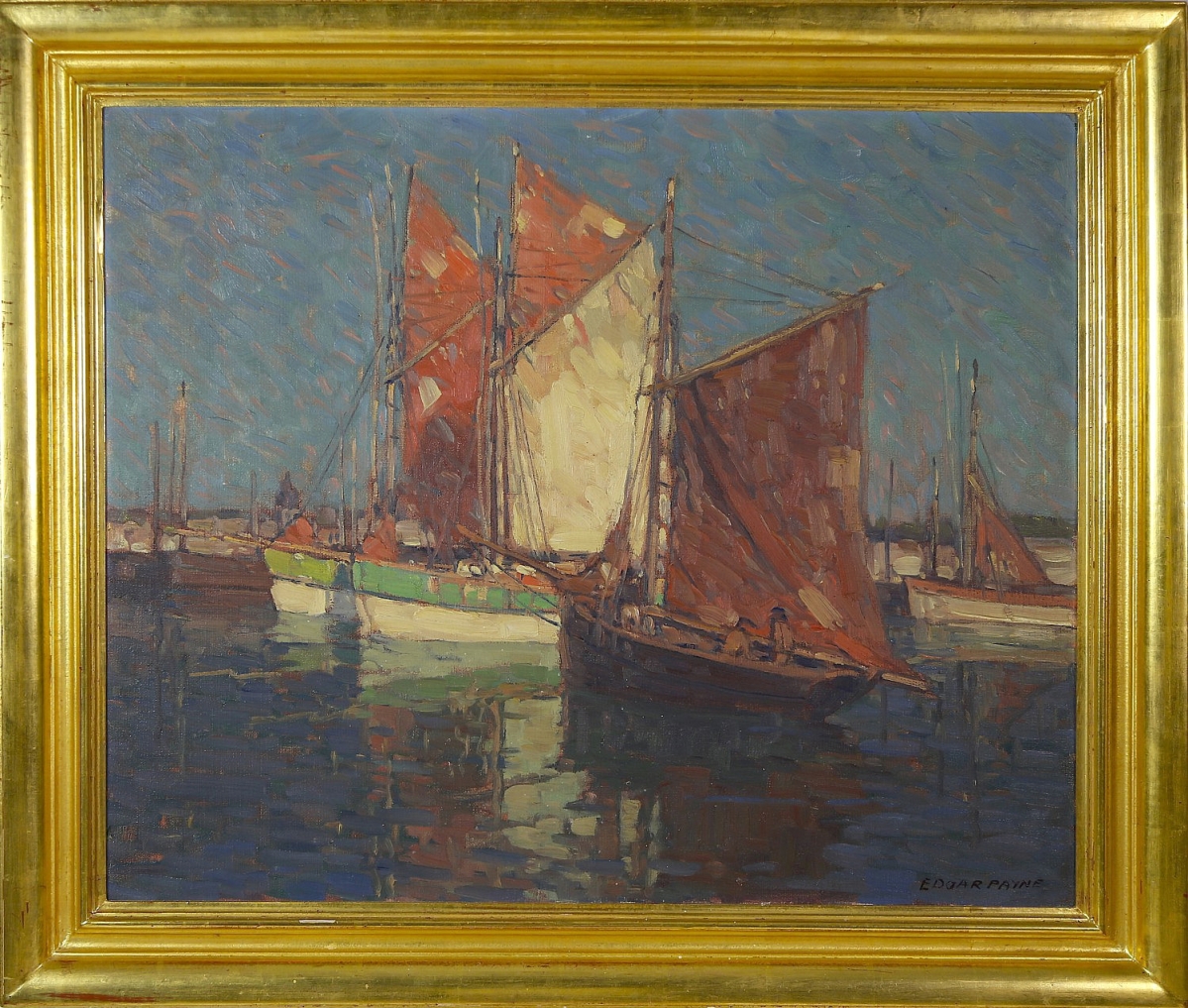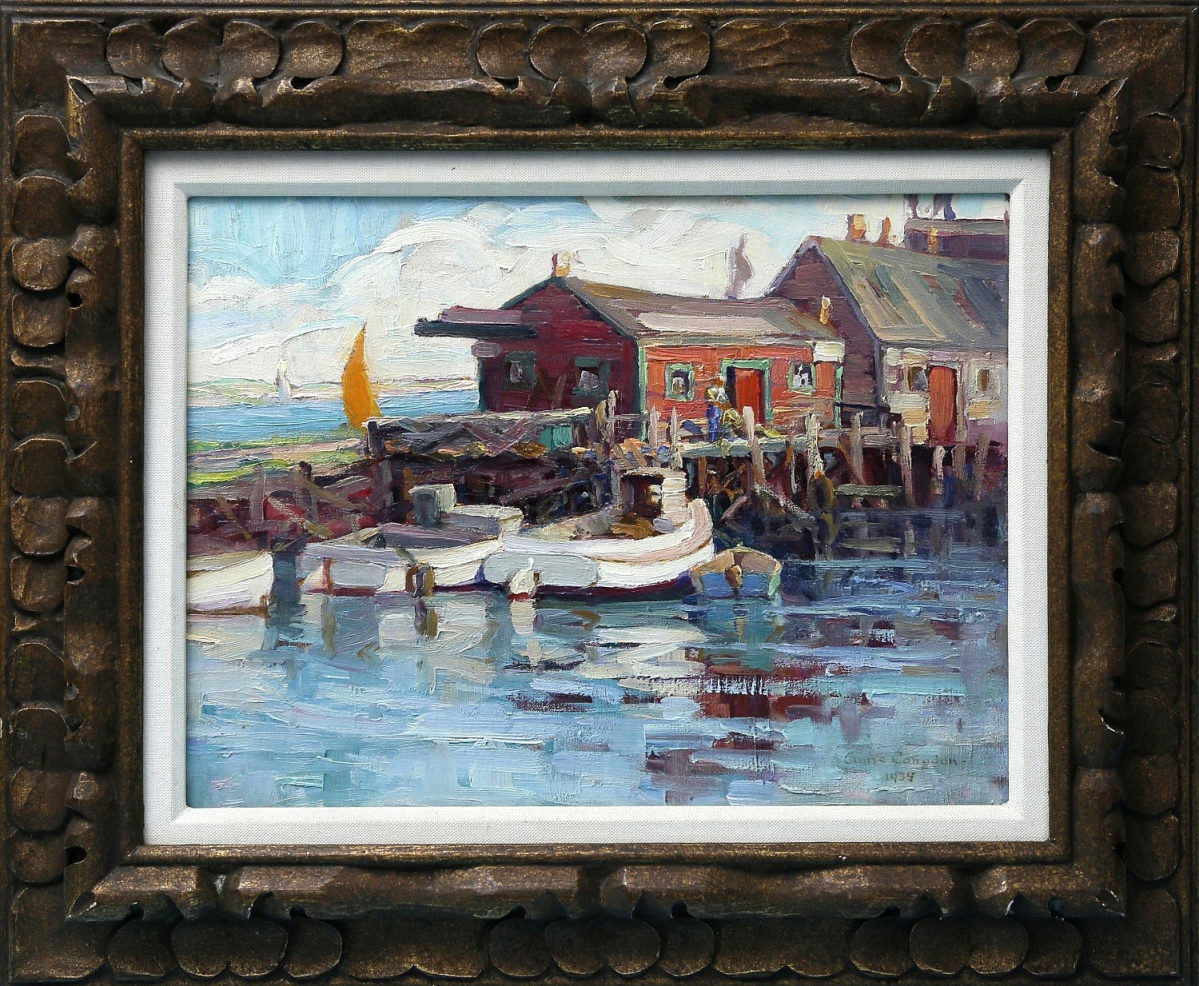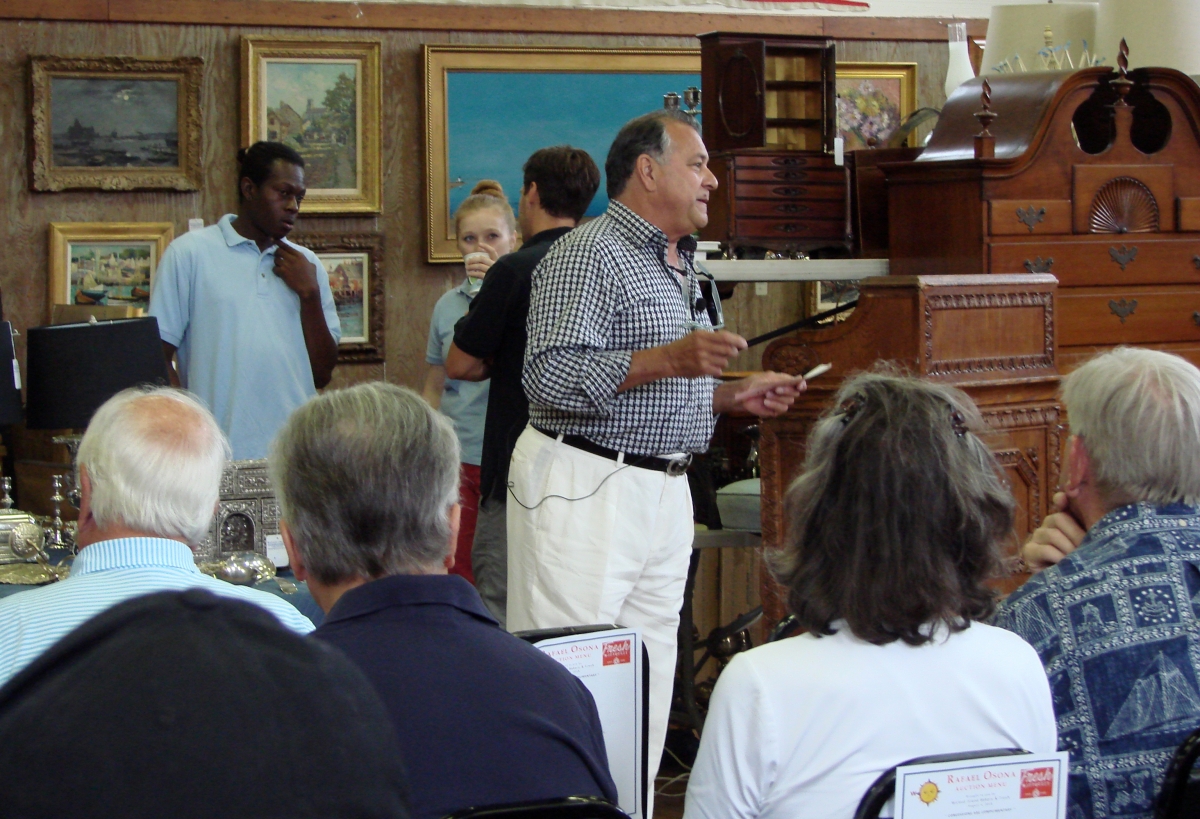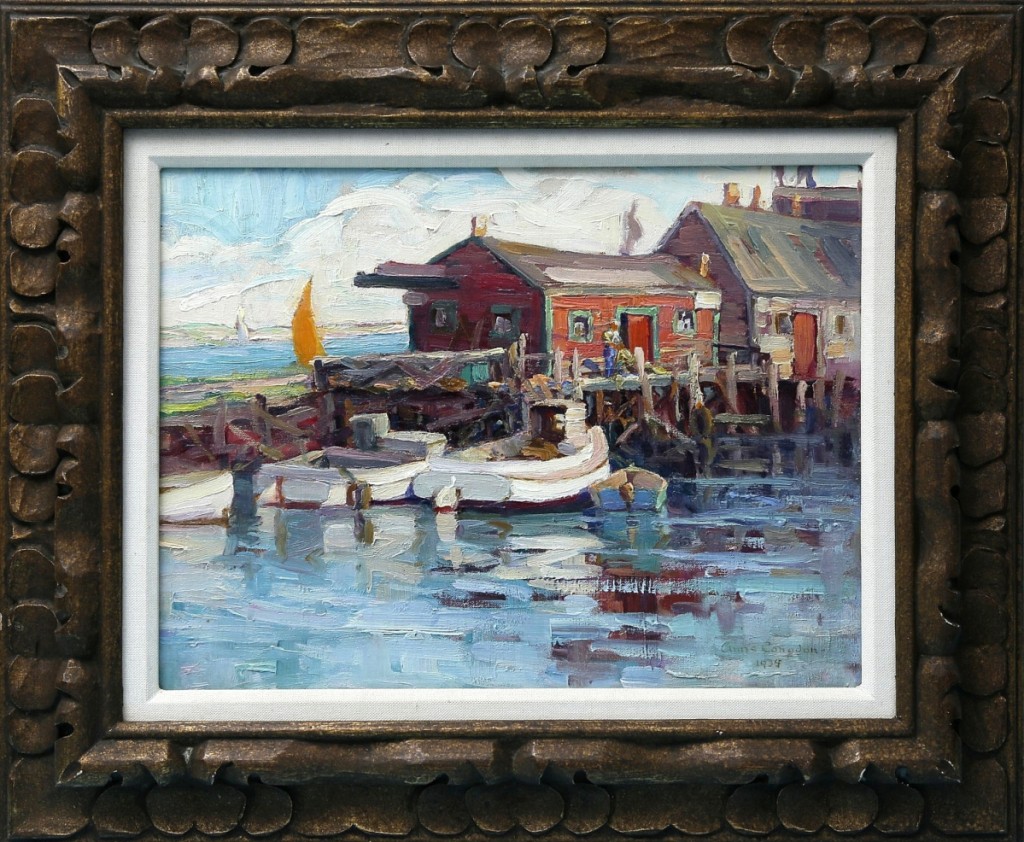
Fetching the highest price of the day was this colorful painting by Anne Ramsdell Congdon (1873–1958), a depiction of “Yerxa’s Boat Shop” on the Nantucket waterfront.
Review and Onsite Photos By Rick Russack
NANTUCKET, MASS. – Perhaps not surprisingly, Rafael Osona’s August 4 sale offered a selection of Nantucket furniture, Nantucket silver, Nantucket baskets, paintings of Nantucket, scrimshaw and other marine arts and more. There is no internet bidding, so the salesroom was packed. There were also numerous absentee and phone bids. Osona runs a fast-paced, entertaining auction in a vintage American Legion hall, just a short distance from the waterfront. He was at the podium for 7½ hours without a pause.
Bringing the highest price of the day was a painting by Anne Ramsdell Congdon (1873-1958), “Yerxa’s Boat Shop,” on the Nantucket waterfront. It was a colorful painting with a red clapboard building, calm blue water and white boats parked at the dock. Her works were included in a 1946 exhibit mounted by the Artists Association of Nantucket, and the painting sold to a phone bidder for $72,000. Another Nantucket painting, this one by Richard Hayley Lever (1876-1958), “Nantucket Harbor,” finished at $32,400. Lever’s works hang in the White House as well as in numerous museums and have been included in many exhibitions between 1913 and 2010. Selling for $48,000 was a French harbor scene, “Trouville, Le Bac de Deauville,” by Eugene Louis Boudin (1824-1898). Boudin was one of the earliest French plein-air painters, known for his marine scenes, especially scenes with people and boats. The painting did not get an opening during the auction but sold shortly thereafter for the amount that Osona had been asking for. Other marine paintings also did well.
As expected, a circa 1845 patriotic polychrome scrimshaw sperm whale tooth brought $60,000, the highest price of the whale bone items. It was a detailed and finely engraved 6½-inch tooth with a well-dressed young lady wearing a laurel wreath and an American Federal shield flanked by foliage. It was bought by a woman in the room who was not known to any of the scrimshaw “crowd.” When asked, she said she had bid for a family member who she declined to name.
An exceptional sailor-made keepsake box inlaid with whalebone, whale ivory and abalone sold for $22,800. The rectangular box was trimmed with whalebone, and the top was inlaid with an ivory plaque engraved with a spread-winged eagle clutching arrows. It included eight different pinwheels, stars, additional shields with flags and much more. Osona said he thought it may have been made by Captain Spencer Pratt of Bristol, R.I. There were several carved walking sticks in the sale, and the most sought-after was an architectural whale ivory and whalebone inlaid example that realized $21,600. Elaborately carved, with tortoise shell diamonds and mother of pearl panels, it had four reeded columns and a unique baleen rope carved interior post.
There was plenty more scrimshaw. A large lower panbone plaque, circa 1840, depicting a busy scene with several ships, whaleboats, whales and more, brought $13,200. A unique whale ivory and whalebone model of a building, circa 1830-40, with multiple windows, a gothic door, peaked roof and open on the back, earned $4,200. Pie crimpers included two heavily carved examples that each sold for $9,000 and another, with a long-haired mermaid with a scrolled tail, that earned $5,280. A crimper with seven different wheels sold for $5,400. This list could go on. The scrimshaw market, as Osona later said, “is hot right now. There was real excitement in the room when any of the scrimshaw lots came up.”
One of the surprises of the day – and a source of much entertainment in the audience – was a carved whale ivory, sailor-made device known as a “home alone.” Osona was offering the item for sale, as he would any other item, when a woman in the audience, yelled out, “Does it work?” Others in the room, chimed in, and it took a couple of minutes before Osona was able to proceed. He later said the selling price, $9,600, was one of the surprises of the day, as it was nearly five times the estimate.
An important logbook with connections to the Moby-Dick story brought $18,000. It was a journal of an 1832-33 voyage from New London to the South Atlantic on the ship Wabash. It was kept by first mate Thomas Nickerson, who, as a cabin boy, had served on the whaleship Essex, which was stove by a whale and sunk in November 1820. Nickerson was one of the few survivors, rescued after 89 days adrift in a whaleboat. That story supposedly inspired Herman Melville to write Moby-Dick. The logbook had 78 pages written in a legible hand, 36 watercolor American and other flags, 44 whale’s tail stamps and 22 full-bodied whale stamps. It included many details of the voyage. The logbook was sold on a single bid to a representative of the Nantucket Historical Association with funds provided by the Friends of the NHA.
Osona had a large selection of British woolies, some with unusual subject matter. Woolies were usually made by seamen on British ships, although some may have been done by retired sailors, generally between the 1840s and the start of World War I. The first one Osona offered depicted a British sailing ship aground on an iceberg. There were several sailors securing the ship to the iceberg and a steamer in the distance, perhaps coming to the rescue. It sold for $6,000. A large example portraying the West Pier in Brighton, with a family on the boardwalk, four large sailing ships, five smaller sailboats, cabanas for day sailors, 13 flags and more reached $3,000. Others, with the more usual subject matter of ship portraits, sold in the $1,500 to $3,500 range with one, showing Queen Victoria’s royal yacht Victoria and Albert II, selling for $2,600.
As one might expect, furniture and other items made on Nantucket are a feature of Osona’s sales. The first lot sold was a set of five Eighteenth Century Benjamin Bunker coin silver teaspoons, which earned $3,900. Bunker was active on the island from about 1772 to 1820. A Nantucket brace back Windsor armchair, late Eighteenth Century, with carved ears on the crest and carved knuckles, on strongly turned legs, realized $8,400. A child’s fan-back Windsor, with a date of 1781 on the back rail, bore the stamp of I. Chase under the seat. It had been made for Polly Coffin, who was born in 1779 and later married a member of the Chase family. She is buried on the island. The history of this chair was maintained by a member of the family, and it sold for $6,000. A Nantucket basket by the first person to make a basket in the style that later became associated with the island sold for $3,600. That maker was Roland Folger and the round, open swing handle basket had his signature stenciled inside.
A few days after the sale, Osona said, “It was a good day. Our sales draw a lot of retail folks buying for their homes on the island or elsewhere, and everyone knows everyone else. There’s an active friends group for the Nantucket Historical Association, and when there’s something that the museum wants, like the Polly Chase chair, the friends group helps provide funds. The scrimshaw was strong, and so were the paintings. We’re quite happy with the results.”
All prices given include the buyer’s premium, as stated by the auction house. For further information, 508-228-3942 or www.rafaelosonaauction.com.

